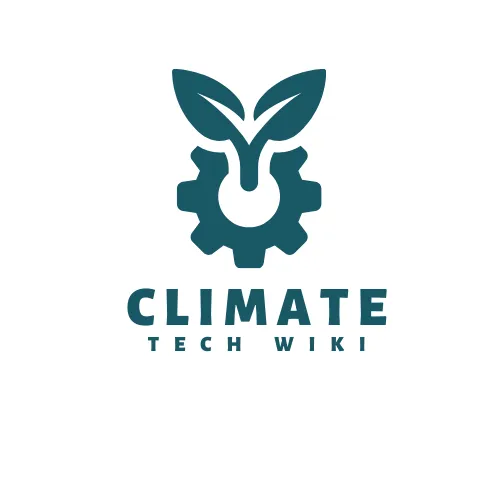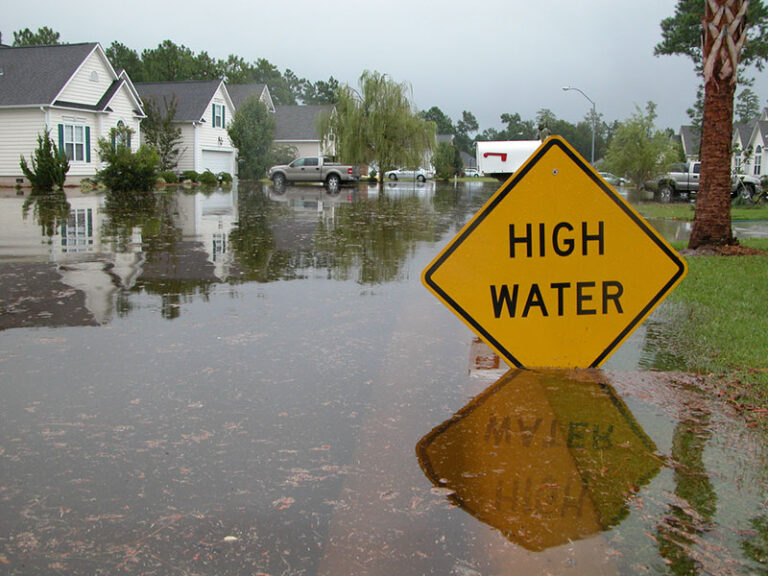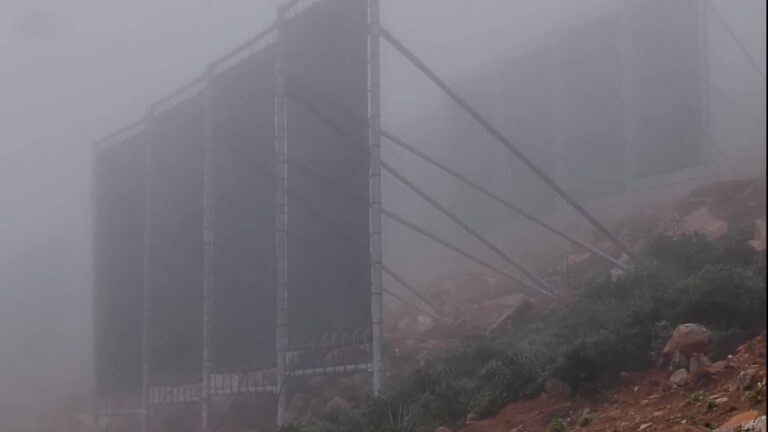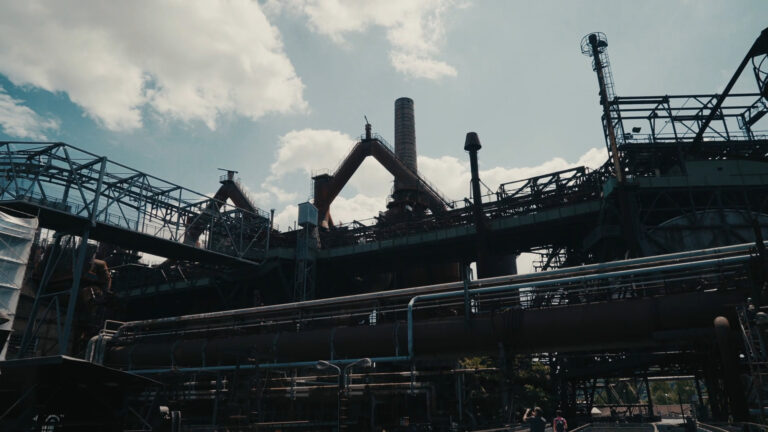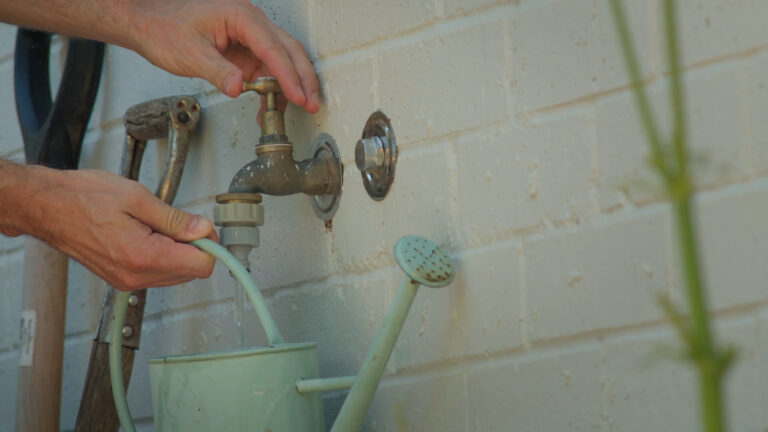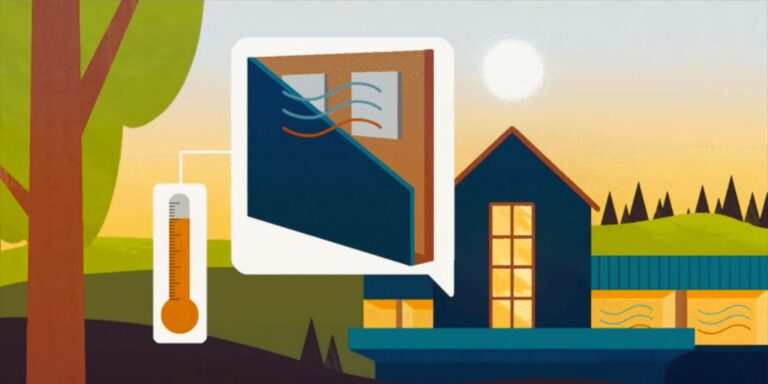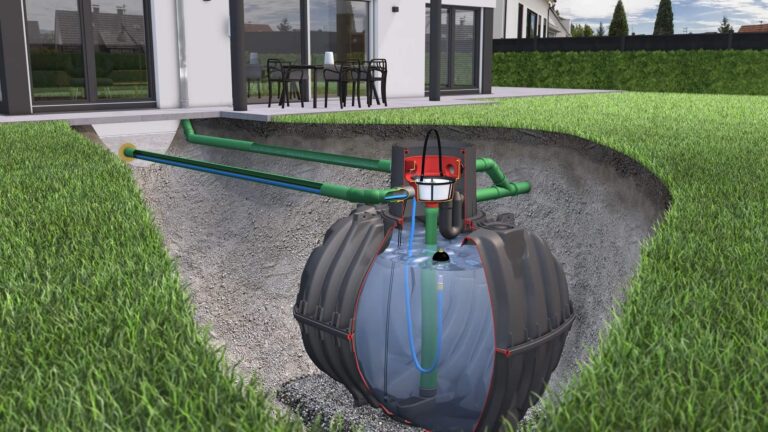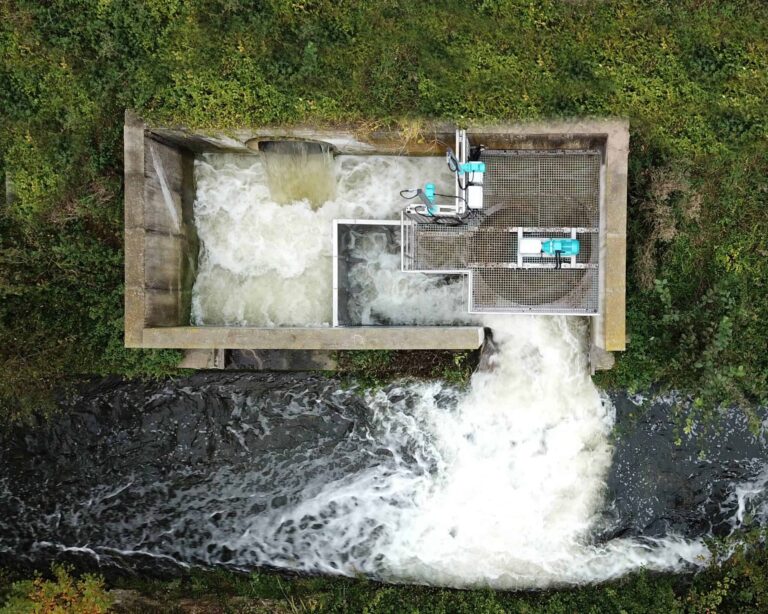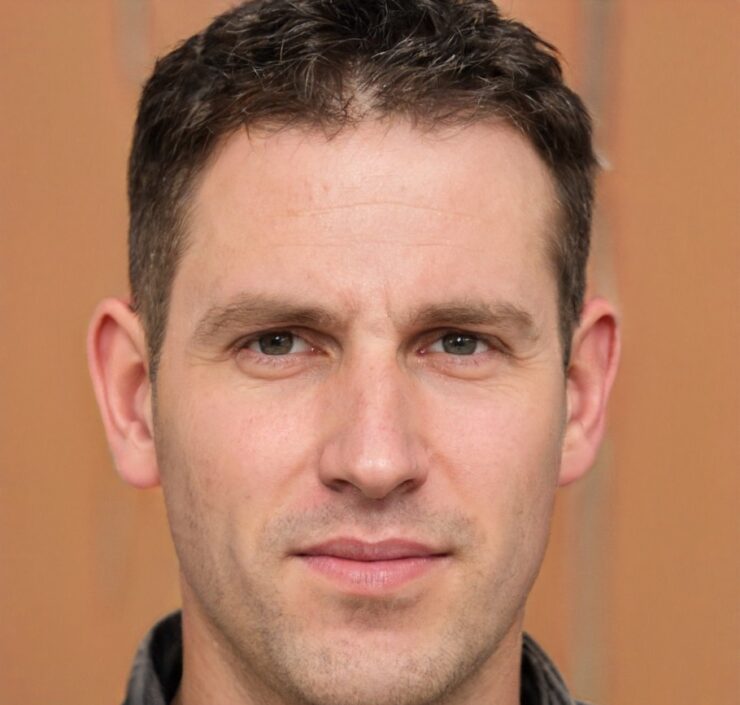Small hydro power uses the flow of water to turn turbines that are connected to a generator for the production of electricity.
Small hydro is divided into further categories depending on its size, such as mini- (less than 1000kW), micro-hydro (less than 100kW) and pico-hydro (less than 5kW) (EHSA 2005); the definitions may vary according to manufacturers and countries, as there is no internationally accepted definition of small hydropower.
In China, small hydropower refers to capacities of up to 25 MW, in India of up to 15 MW and in Sweden ‘small’ refers to up to 1.5 MW. However, a capacity of up to 10 MW is a generally accepted norm by the European Small Hydropower Association (ESHA), the European Commission, and UNIPEDE (International Union of Producers and Distributors of Electricity).
In general, there are three different configurations of hydropower plants:
- Run-of-the-river
- Storage
- Pumped storage
If there is a water storage possibility, through an existing or newly built dam, then the power plant is a storage power plant. If there is the possibility to return the water to the upper reservoir through pumping then it is a pumped storage power plant.
These are rare for small-scale hydropower plants. Run-of-the-river power plants use the flowing water to generate power, without needing changes to the river flow. Mini-, micro- and pico-power plants generally have no dam and are therefore run-of-the-river power plants. After use, the water used in small-hydro plants is returned to its natural course.
There are two factors that determine the amount of power that can be produced: the head (i.e. the height of the water drop) and the flow rate; the higher the head the smaller the flow rate needed to produce the same amount of electricity. The overall production capacity depends on the seasonal and yearly differences in water availability.
Depending on the head height and the amount of flow, different types of turbines can be used (see table). There are mainly two types of turbines: impulse and reaction turbines.
Different Turbine Types
Impulse turbines have the runner (the turning part of the turbine) operated in air, and the whole process takes place at atmospheric pressure.
This kind of turbines are more tolerant to particles in the water, the access to working parts is easier compared to reaction turbines, there are no parts that work under pressure and they have a better part-flow efficiency.
Nonetheless, these turbines cannot be used at all sites as they require a high head, a part from cross-flow turbines that are able to operate up to about 4m head.
Cross-flow turbines are a type of impulse turbines, which has several advantages: they can be used for a wide range of head heights and power classes and can be produced very easily e.g. by cutting long pipes into strips.
Impulse Turbine in Indonesia
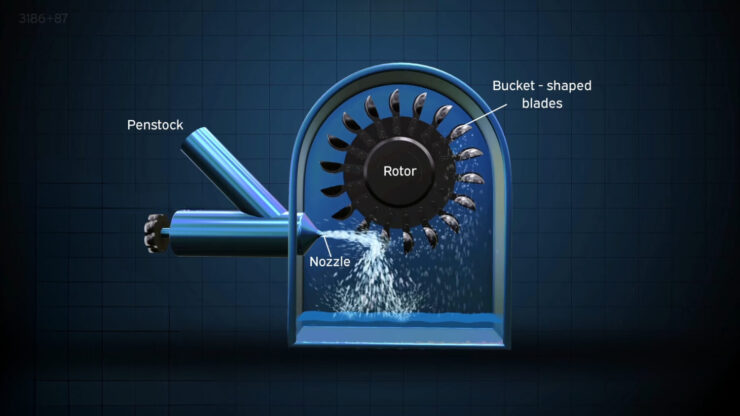
In Indonesia, impulse turbines are used in regions where simple and low-maintenance energy solutions are essential. Unlike reaction turbines, impulse turbines do not require full immersion in water and are not housed within a pressure casing.
This design simplicity means that impulse turbines are less complex and easier to maintain, making them ideal for remote or difficult-to-access areas in Indonesia where professional maintenance services might be scarce.
Reaction Turbine in Nepal

Nepal’s geography, featuring high mountains and flowing rivers, makes it suitable for reaction turbines, which operate fully immersed in water within a pressure casing. However, the installation and maintenance of these turbines are more complex due to their enclosed setup.
The power output of reaction turbines in Nepal is primarily determined by the head height and the water flow, which can vary. Planners must consider seasonal and annual variations in water availability to ensure consistent electricity production, especially in run-of-the-river plants.
For run-of-the-river power plants in Nepal, a consistent and minimum water flow is crucial throughout the year. These plants are designed to utilize the natural flow of rivers without large dams, thus requiring a steady flow to maintain electricity production year-round.
Planners need to carefully analyze historical and predicted water flow data to ensure the viability and efficiency of these hydropower plants in delivering sustainable energy.
Engineering & Infrastructure Requirements
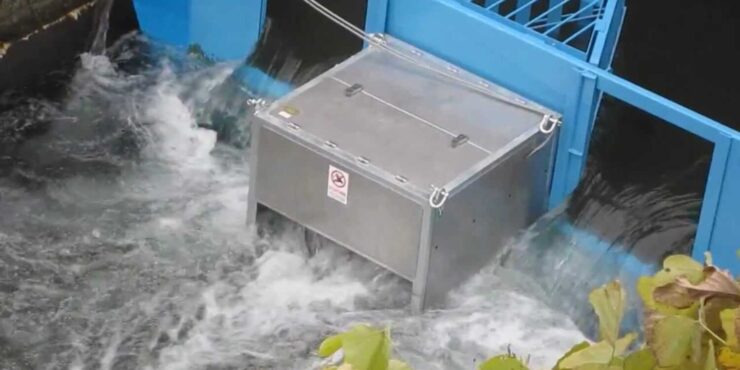
Micro- and pico-hydro power plants are best suited for isolated areas where there is no electricity grid Off the grid power plants require local load controlling to stabilise frequency and voltage of supply.
They have the advantage that they are generally designed for single households or small villages and can be developed with local materials and labour. For small pico-hydro turbines the turbine/generator set can be bought as a module “off the shelf”, whereas from micro-power plants upwards the turbines are especially designed for the location.
Starting from mini-hydropower plants upwards in size, conventional engineering approaches are used. The size of the machinery is then such that road access is advisable Mini-hydro power plants are most often operated grid connected.
Small hydro power plants generally have no form of water storage.
Planning Requirements
In order to proceed with a small hydropower scheme, it is necessary to obtain the right to utilize all the land concerned and it is important to find out how contractors will access the different areas of the hydropower scheme with the necessary equipment.
It is therefore wise to approach the relevant land-owners at an early stage in order to identify any objections to the proposed project and to negotiate access to the land. Since water courses frequently define property boundaries, ownership of the banks and existing structures may be complex.
Failure to settle these issues at an early stage may result in delays and in cost penalties later on in the project.
The world wide estimated amount of installed small hydro capacity was 85GW at the end of 2008: 65GW were estimated to be in developing countries of which 60GW in China (REN21, 2009). The overall technical potential for small hydro is estimated to be between 150 and 200GW.
Installed Capacity of Small Hydro Plants
Small hydro already provides electricity to a large number of households in developing countries where other technologies would be more difficult to install.
Over the last 30 years the technology has been used and installed extensively in China, but also in Nepal, Vietnam and several South American countries, among others; the market for Africa is expected to grow.
Hydropower plants represent 27% of all CDM projects requesting validation. In absolute numbers this implies 1351 projects and an installed capacity of 44’995MW. Currently 553 projects are registered.
Technology Development
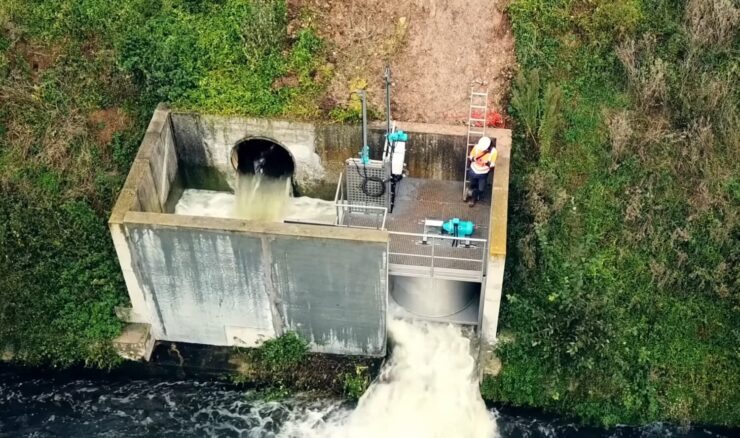
Small-scale hydropower is a well-established technology that benefits from advances made in large-scale hydropower turbines.
Technical enhancements specific to small-scale hydro include developments in turbines for low head conditions, in-stream turbines, and turbines designed to minimize impacts on fish populations. Moreover, reductions in operation and maintenance costs are anticipated.
Looking ahead, there are expectations for the creation of hybrid systems that integrate hydro with wind or hydrogen production for energy storage, although the latter remains largely in the research and development phase, as noted by the International Energy Agency in 2008.
Switching from traditional fuels to electricity can lead to reduced air pollution, enhanced health, and a decrease in social burdens, such as those associated with collecting firewood.
Electricity usage can also boost income-generating activities, notably improving irrigation, crop processing, and food production, according to the European Small Hydropower Association in 2005. These activities could offer more employment opportunities in rural areas.
Research commissioned by the UK Department for International Development has highlighted the significant potential of small hydropower to reduce poverty, especially in low-income countries. Micro-hydro has proven to be a cost-effective method for poverty alleviation.
However, the benefits of micro-hydro in poverty reduction are often underestimated as they do not account for various hard-to-measure, yet significant effects.
These include savings from not having to transport firewood or other fuels, enhanced education through available electric lighting, and better health and agricultural outputs from the availability of clean drinking and irrigation water, facilitated by infrastructure originally constructed for micro-hydro projects.
On a broader scale, small-scale hydro reduces reliance on imported fossil fuels, thus aiding macro-economic stability. The impact on air pollution and greenhouse gas emissions varies depending on the energy sources replaced by hydropower.
Since small hydropower is virtually carbon dioxide neutral, it is likely to offer a considerable improvement over traditional electricity generation in terms of greenhouse gas and air pollutant emissions.
Unlike larger hydroelectric installations, small-scale hydro has a minimal impact on local ecosystems. The changes required in river flow are modest, allowing existing ecosystems to persist largely unchanged. Despite this, advances in the development of more “fish-friendly” turbines are still anticipated.
Climate
A hydropower plant runs practically CO2 free. The main emission source is the production of the components and the transport to the location of the power plant.
According to the Energy Technology Perspectives 2008 the generating costs for small hydro power are between 0.02 and 0.06 USD/kWh (IEA, 2008). In older studies the capital costs, based on the average of case studies have been determined to be approx. USD 965 per installed kW.
Investment Costs for Small Scale Hydro Energy

Given the substantial initial investments required for power plants, it’s crucial to ensure that the hydrological conditions in a region will remain stable over time.
The funding needed for small hydroelectric plants varies based on several factors, including the available head and flow rate, as well as the site’s geological and geographical characteristics. Costs also depend on the type of equipment used, such as turbines and generators, and the scale of necessary civil engineering works.
Leveraging pre-existing structures like weirs, dams, or reservoirs can notably diminish both environmental impacts and financial costs.
Typically, locations with low heads and high water flows demand more extensive civil engineering efforts and larger turbines to manage the increased water volume.
However, if the hydro system serves multiple purposes—like combining power generation with flood control, irrigation, or providing drinking water—the investment can yield returns more quickly.
It’s also important to consider the expenses related to water usage, including water charges or concession fees, and the administrative processes required for securing water and construction permits. Operating and maintenance expenses generally account for 1.5-5% of the total project costs.
On a per-kilowatt basis, larger small hydropower projects often prove more cost-effective due to economies of scale and the fixed costs associated with any project, regardless of its size.
